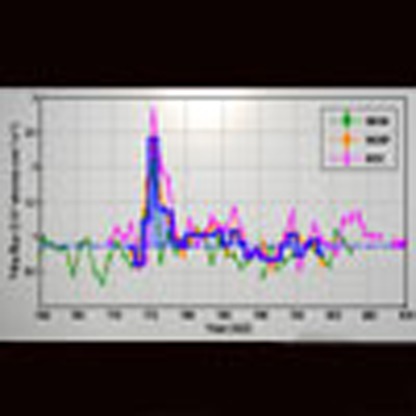- Record: found
- Abstract: found
- Article: found
Multiradionuclide evidence for the solar origin of the cosmic-ray events of ᴀᴅ 774/5 and 993/4

Read this article at
Abstract
The origin of two large peaks in the atmospheric radiocarbon ( 14C) concentration at AD 774/5 and 993/4 is still debated. There is consensus, however, that these features can only be explained by an increase in the atmospheric 14C production rate due to an extraterrestrial event. Here we provide evidence that these peaks were most likely produced by extreme solar events, based on several new annually resolved 10Be measurements from both Arctic and Antarctic ice cores. Using ice core 36Cl data in pair with 10Be, we further show that these solar events were characterized by a very hard energy spectrum with high fluxes of solar protons with energy above 100 MeV. These results imply that the larger of the two events ( AD 774/5) was at least five times stronger than any instrumentally recorded solar event. Our findings highlight the importance of studying the possibility of severe solar energetic particle events.
Abstract
 Natural spikes in radiocarbon have been identified at ᴀᴅ 774/5 and 993/4 and attributed
to exceptional cosmic-ray events, although the cause remains uncertain. Here, the
authors analyse records recovered from ice cores and suggest these spikes originated
from extreme solar particle events.
Natural spikes in radiocarbon have been identified at ᴀᴅ 774/5 and 993/4 and attributed
to exceptional cosmic-ray events, although the cause remains uncertain. Here, the
authors analyse records recovered from ice cores and suggest these spikes originated
from extreme solar particle events.
Related collections
Most cited references47
- Record: found
- Abstract: found
- Article: not found
Timing and climate forcing of volcanic eruptions for the past 2,500 years.
- Record: found
- Abstract: not found
- Article: not found
Simulation of particle fluxes and cosmogenic nuclide production in the Earth's atmosphere
- Record: found
- Abstract: found
- Article: not found